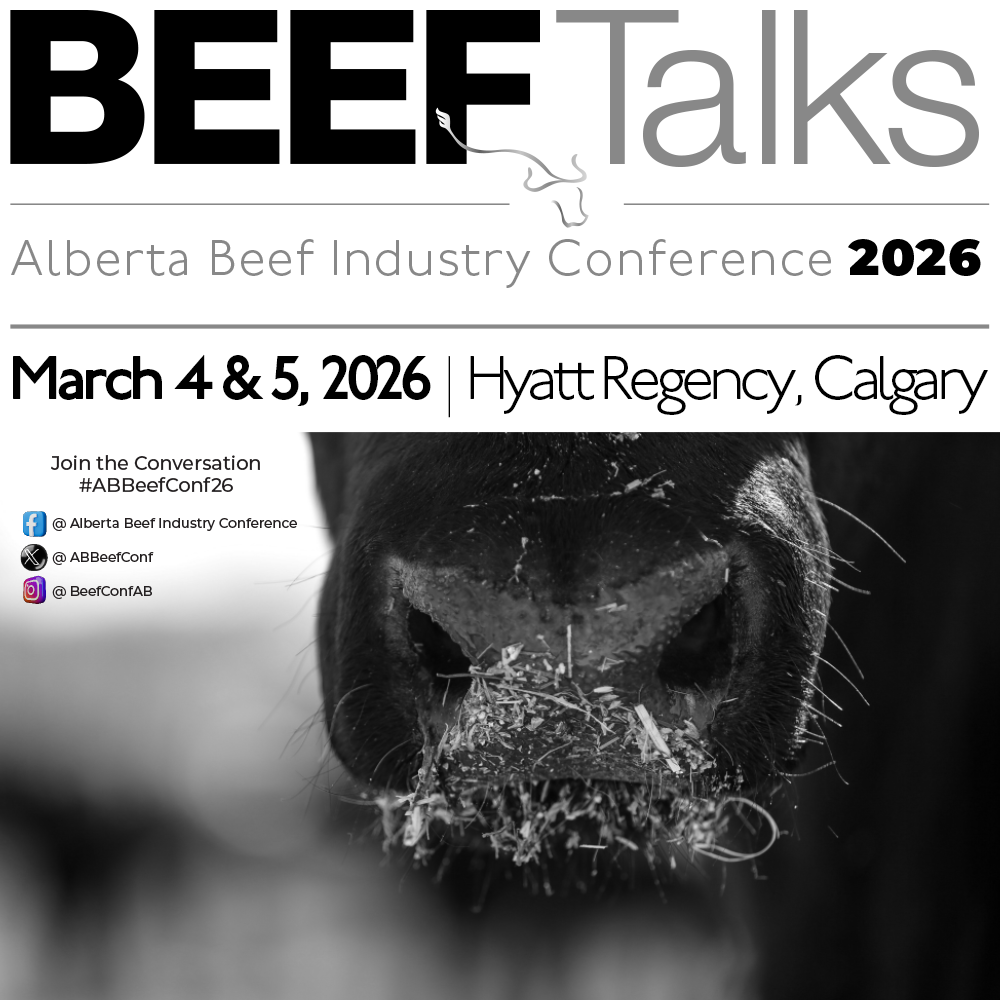AB Direct - Steers
Rail: 492.00-493.50 FOB feedlot (last week)
AB Direct - Heifers
Rail: 492.00-493.50 FOB feedlot (last week)
US Trade- Steers
Rail: 355.00-363.00 (IA, NE) last week
US Trade - Heifers
Rail: 355.00-363.00 (IA, NE) last week
Canadian Dollar
0.19

Bovine tuberculosis investigation sees trace-in adjustments
This is the second article in a series related to bovine tuberculosis investigations. In the first, we described what to expect during an investigation and how testing works up to the point of culture. In this one, we’ll explore some specific nuances that can evolve during the process, including recent modifications to the trace-in period for the current investigation.
As of the end of August, more than 100 herds in Alberta and Saskatchewan have been involved, to varying degrees, in the ongoing bovine tuberculosis (bTB) investigation stemming from a case detected in late 2024. This number is expected to grow as CFIA identifies and contacts trace-in herds (animals purchased by the index herd) through the fall.
Genetic Sequencing
bTB is a slow-moving disease. It takes a long time, often years, for signs to become visible in an infected animal. It also spreads slowly between animals in a herd. When a diseased animal is detected through routine slaughter surveillance, the rule-of-thumb estimate is the disease has likely been incubating in the herd for five years (not that the disease has impacted an individual animal for five years). The five-year rule-of-guides the initial window of investigation, which usually traces animals entering or leaving a positive herd over the previous five years. As the investigation continues and more information is gathered, the tracing window can be refined.
During a bTB investigation, bTB bacteria are grown in a culture and then genotyped. Knowing the genetic sequence helps us understand how closely related the strain is to other known strains. Big picture, this information helps determine whether the infection is connected to other known outbreaks.
The amount of genetic variation is also helpful for estimating how long the infection may have been in a positive herd. Over time, bTB bacteria may accumulate small mutations. In the case of the current (2024) investigation, the genetic sequences of the positive animals from the index herd are similar enough to each other to be confident there was a single introduction of disease into the herd. But they are different enough to suggest the disease was present in the herd, undetected, for some time.
The bacteria that cause bTB are adept at hiding from the immune system. They create lesions that wall off the bacteria inside the animal, allowing them to lie dormant until a period of stress reactivates the infection. Animals in this subclinical stage do not appear sick, which makes it unlikely a producer would suspect a problem. Nonetheless, there is compelling evidence from this investigation to suggest the disease was introduced to the index herd more than five years ago.
To maintain the confidence of our trading partners, it is very important for CFIA to take every reasonable action to identify the potential source of the infection. With industry support, the CFIA is applying a modified trace-in period to focused on the most likely time of introduction to the infected herd.
Trace-In Adjustment for the 2024 Investigation
The starting point for tracing animals that entered or left a herd is based on that initial five-year rule of thumb mentioned earlier but can be adjusted based on information gathered during each investigation. Based on the genomic information now available, owners of herds that sold animals into the infected herd in this investigation should know that the trace-in period has been adjusted and the CFIA will:
- Identify trace-in animals for 15 years prior to the 2024 confirmed infection, as based on information and records provided by the index herd owner.
- Prioritize testing for herds that provided trace-in animals prior to 2021.
- Conduct additional testing as necessary, based on epidemiological information, for herds that provided trace-in animals after 2021.
The modified approach prioritizes testing of higher-risk trace-in herds, optimizing resources and reducing the burden on producers whose herds are unlikely to have been the source of infection.
CFIA movement controls will be placed on trace-herds once testing begins. Risk assessments for herds with negative histopathology results may allow them to be released from movement controls before final culture results are available.
The tracing window for animals that left the index herd (trace-outs) remains at five years. The process for testing lifeline herds (herds directly related to a positive animal in the index herd) is also unchanged.
Shifting the trace-in focus is an example of science-based decision making within CFIA. Both the epidemiology investigation and the genomic results were taken into careful considered in this decision. This approach provides confidence that Canada has a robust system to ensure eradication of bTB.
Producers with questions, concerns, or those who are impacted by the investigation, are encouraged to contact Karin Schmid at the ABP office at karins@albertabeef.org, 403-451-1173 (office), or 403-463-7715 (cell).
Visit the CFIA website for more information.


